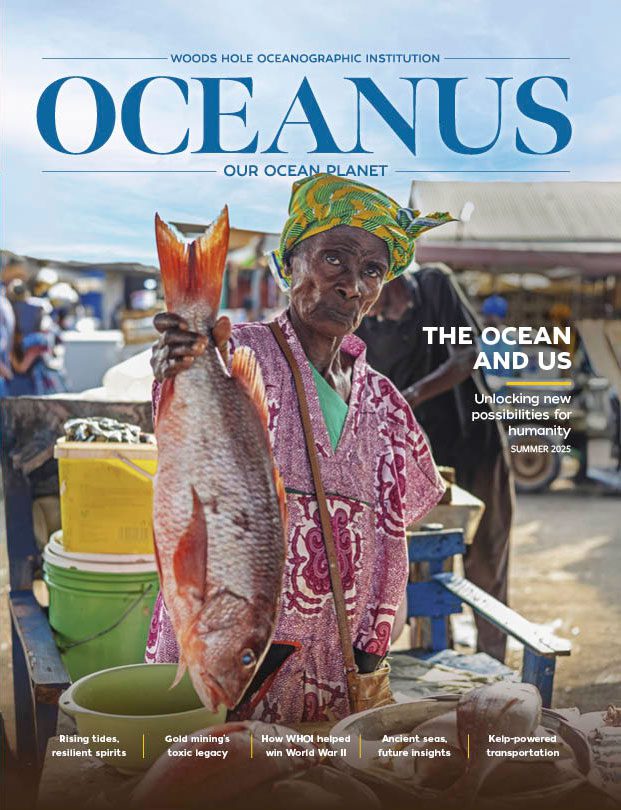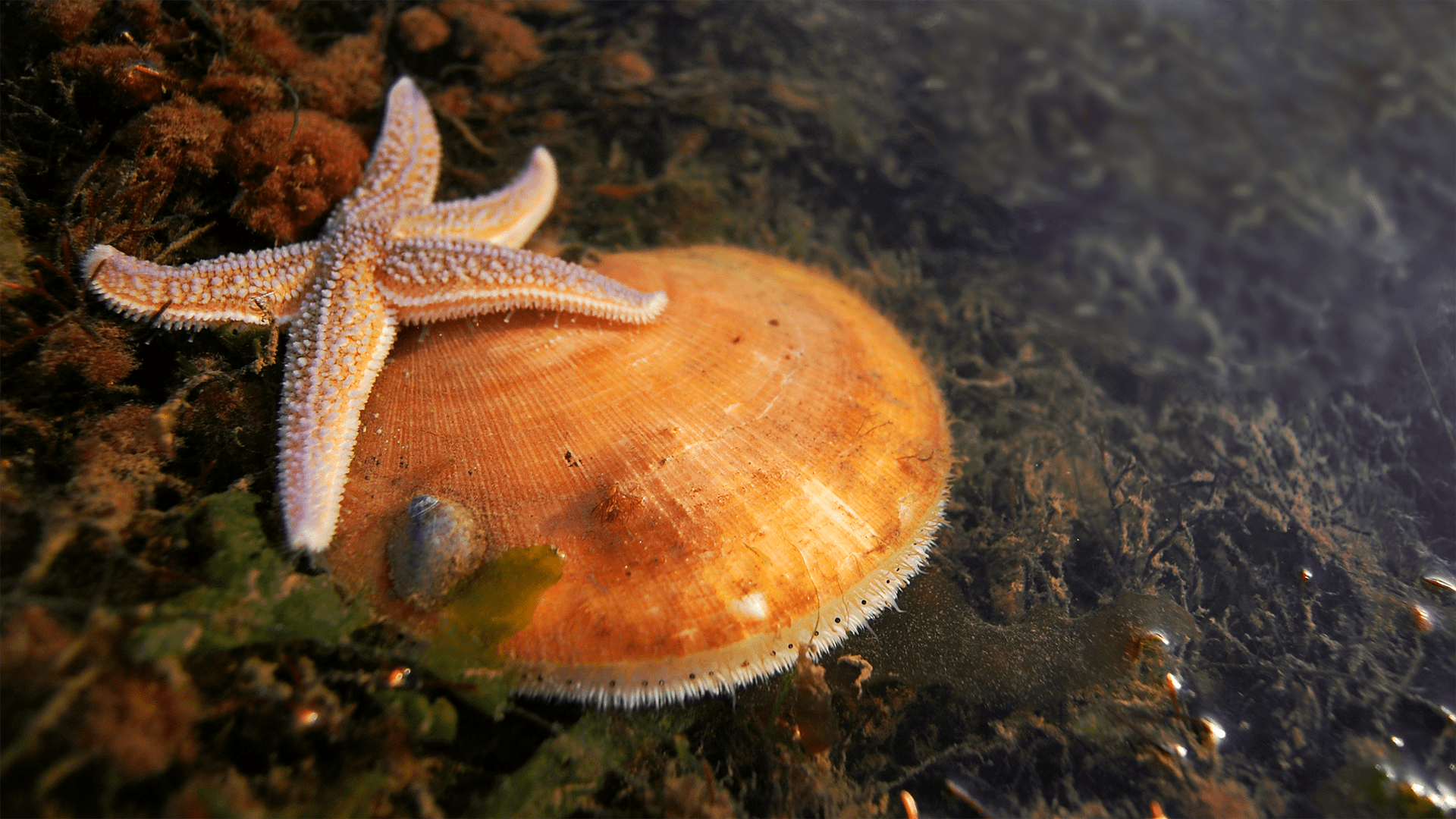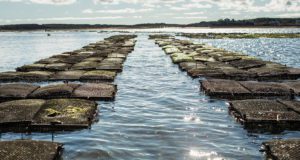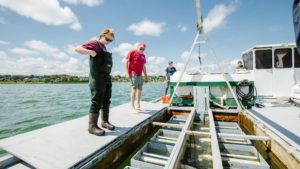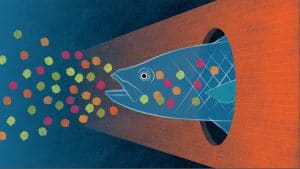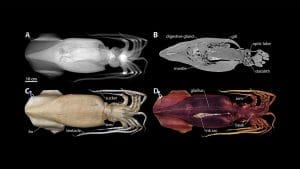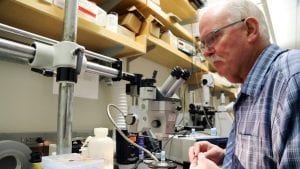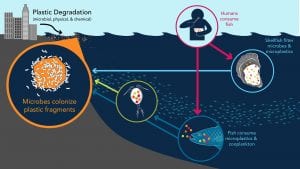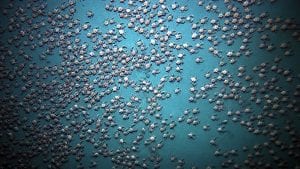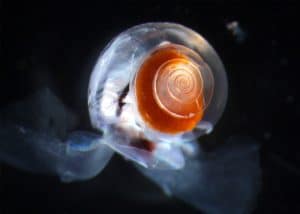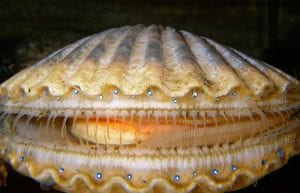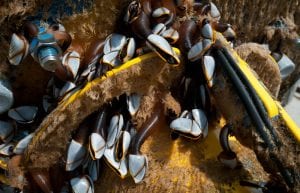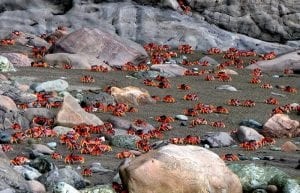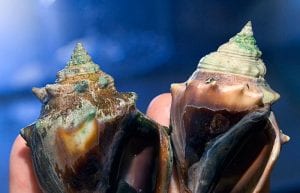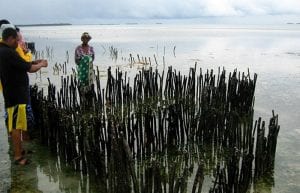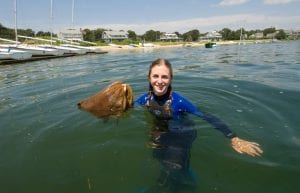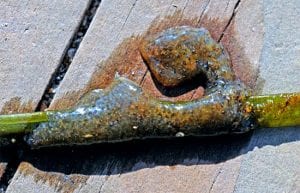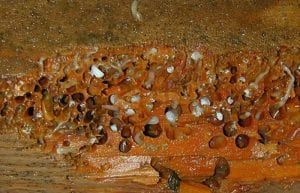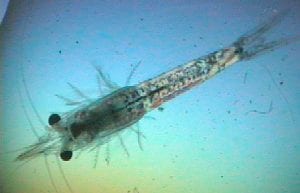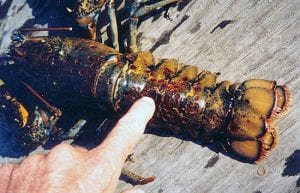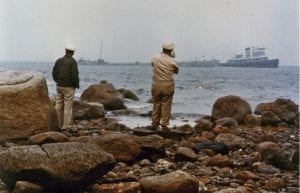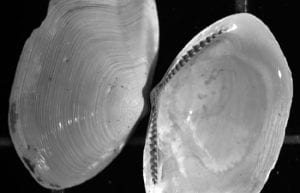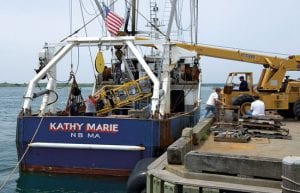Shellfish
Is underwater construction noise leaving scallops defenseless?
Sea scallops expend a lot of energy reacting to noisy pile drivers
Puzzling over a mollusk mystery
What’s causing a contagious cancer to spread among clams?
Invasive tunicates have shellfish farmers crying “foul”
As shellfish farmers struggle with invasive tunicate invasions, scientists are trying to gain insight into…
Microplastics in the Ocean – Separating Fact from Fiction
WHOI scientists weigh in on the state of marine microplastics science.
New Techniques Open Window into Anatomy of Mollusks
Woods Hole Oceanographic Institution (WHOI) scientists are using advanced medical imaging techniques and diagnostic tools…
Do Microplastics in the Ocean Affect Scallops?
WHOI scientist Scott Gallager is making field observations and conducting lab experiments to explore the…
Junk Food
An estimated eight million tons of plastics enter our oceans each year, yet only one…
Crabs Swarm on the Seafloor
Expeditions to the tropics and Antarctica have turned up crab populations—for better or worse—in unexpected…
On the Trail of an Invader
To find out when and how fast a small gray barnacle came to New England…
Scallops Under Stress
Like other marine species, scallops face multiple climate change-related problems. Summer Student Fellow Cailan Sugano…
Sassy Scallops
MIT-WHOI Joint Program graduate student Meredith White examined how increasingly acidic ocean waters affect scallop…
Barnacles and Biofilms
As long as sailors have been going down to the sea in ships, they have…
A Torrent of Crabs Running to the Sea
Joanna Gyory’s Ph.D. plans changed completely when she saw the crabs. It was her third…
Ocean Acidification: A Risky Shell Game
A new study has yielded surprising findings about how the shells of marine organisms might…
Shellfish’s Mysterious Pathways to Adulthood
With a cool ocean breeze under a cloudless sky, children weave small sailboats through the…
Are Sea Squirts Crowding Out Scallops?
Over the last 10 years, Mary Carman has documented how slimy sea squirts have invaded…
Happy as a (Newly Discovered) Clam
Aboard a research ship in 1997, Janet Voight was amazed when she examined a small…
Are Pollutants Disrupting Marine Ecosystems?
Ask people to name some animals—any animals—and they will give you a long list. But…
A Mysterious Disease Afflicts Lobster Shells
In the late 1930s, lobstermen in Rhode Island began to notice strange black spots on…
Still Toxic After All These Years
This is a story about persistence—of oil, and of people. It began in 1969 when…
Ocean Circulation and a Clam Far From Home
In my first year of graduate school, I was stumped by a big question on…
New ‘Eyes’ Size Up Scallop Populations
Part of the fun of fishing is never knowing exactly what might be swimming around…
